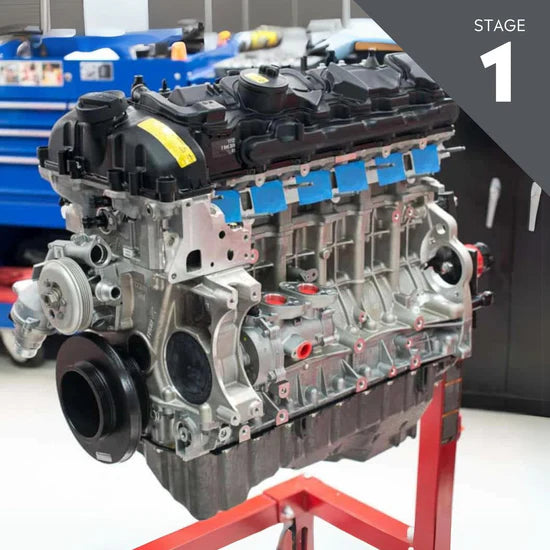
BMW S55 Engine Performance Guide: Power, Tuning, and Potential
Introduction to the BMW S55 Engine
The BMW S55 engine is the heart of BMW’s M performance lineup, featured in a range of F Series models including the M2 Competition, M2 CS, M3, M3 Competition, M3 CS, M4, M4 Competition, M4 CS, M4 GTS, and M4 DTM from 2015 to 2020. As the successor to the S65 4.0L V8, the S55 brings cutting-edge engineering to deliver impressive power and performance.
S55 Engine Specifications and Design
The S55 engine is a 3.0L twin-turbocharged inline 6-cylinder powerhouse with a bore of 84mm, a stroke of 89.6mm, and a compression ratio of 10.2:1. Its rotational internals are built for extreme performance, featuring a forged crankshaft, forged connecting rods, and an upgraded valvetrain for enhanced durability.
Key S55 Engine Features:
- Twin Turbochargers: Equipped with an air-to-water intercooler, the S55’s twin turbochargers boost power while maintaining efficiency.
- Variable Cam Timing and Variable Valve Lift: These technologies reduce turbo lag and improve throttle response, making the S55 one of the highest-performing 3.0L engines on the market.
Performance and Tuning Potential of the BMW S55
The BMW S55 engine delivers between 425 to 493 horsepower and 406 to 443 lb-ft of torque, depending on the model. Its sophisticated design not only provides excellent power-to-mileage efficiency but also offers substantial tuning potential.
Tuning the S55 Engine:
- Software Tuning: The S55 engine responds exceptionally well to software tuning, with significant power gains achievable through ECU remapping.
- Hardware Upgrades: After addressing common issues like crank hub failure, further performance can be unlocked by upgrading components such as the intercooler, turbochargers, intakes, and exhaust systems, pushing output to 650-700 horsepower.
Addressing Common S55 Engine Problems
While the BMW S55 is a marvel of engineering, it is not without its challenges. The most notable issue is crank hub failure. The stock crank hub, which drives the timing chain, relies on friction for alignment, making it prone to slipping. This issue can be mitigated by installing a high-performance, pinned version of the crank hub, available from aftermarket companies like CarBahn.
Additional Considerations:
- Manual Transmission vs. DCT: Cars with manual transmissions that are tuned and equipped with aftermarket clutches are more susceptible to crank hub failures due to increased noise and oscillations. The DCT gearbox is more robust and smoother, making it the preferred choice for ultra-high-performance builds.
Advanced Tuning for the S55: Beyond 700 Horsepower
For those seeking extreme power levels, beyond 700 horsepower, the S55 engine requires significant upgrades. These include installing forged pistons, rods, high-performance valve springs, and lowering the compression ratio to safely handle increased boost levels. With these upgrades in place, additional fuel sources like methanol injection can be introduced to further enhance performance.
Unlocking the Full Potential of the BMW S55 Engine
The BMW S55 engine is a remarkable piece of engineering that offers both impressive stock performance and vast tuning potential. Whether you’re aiming for a reliable daily driver with a bit more punch or a track-ready beast, the S55 provides a solid foundation for any performance build. By addressing key weaknesses and making strategic upgrades, you can transform your BMW into a true powerhouse that’s capable of dominating both the street and the track.
Explore more about BMW S55 performance parts and how you can maximize your BMW’s potential.
